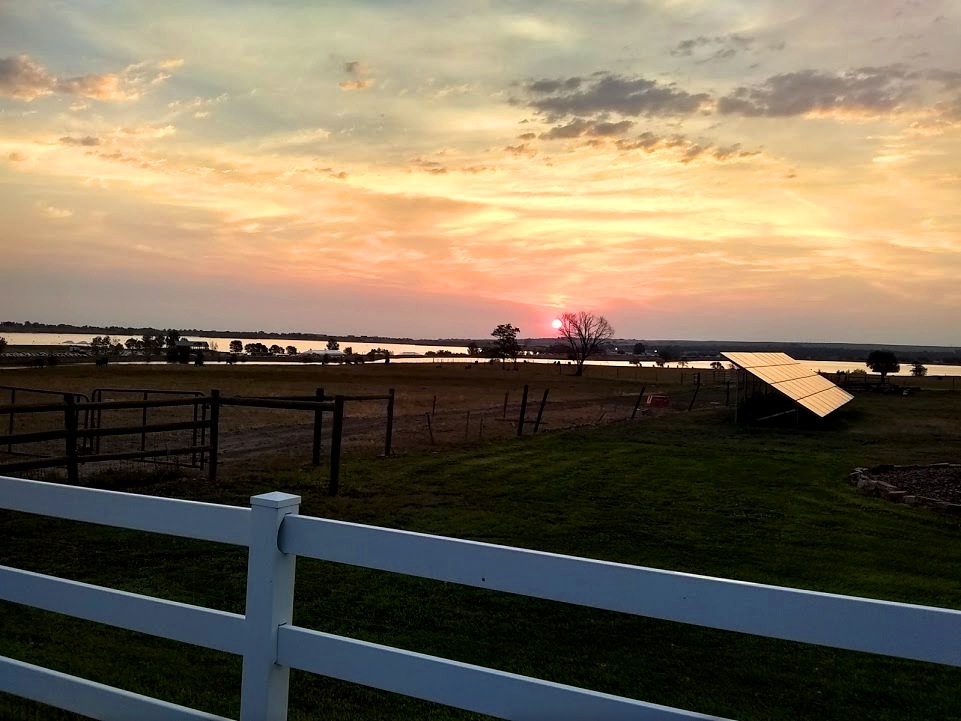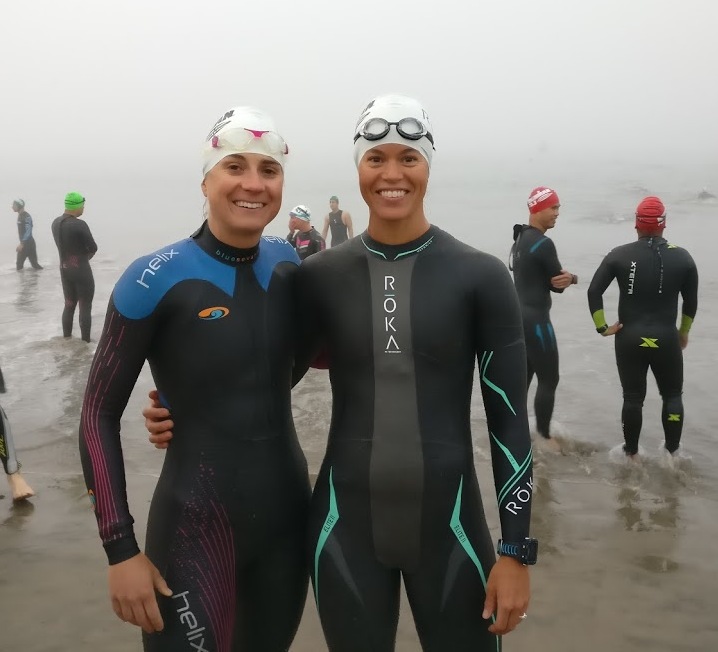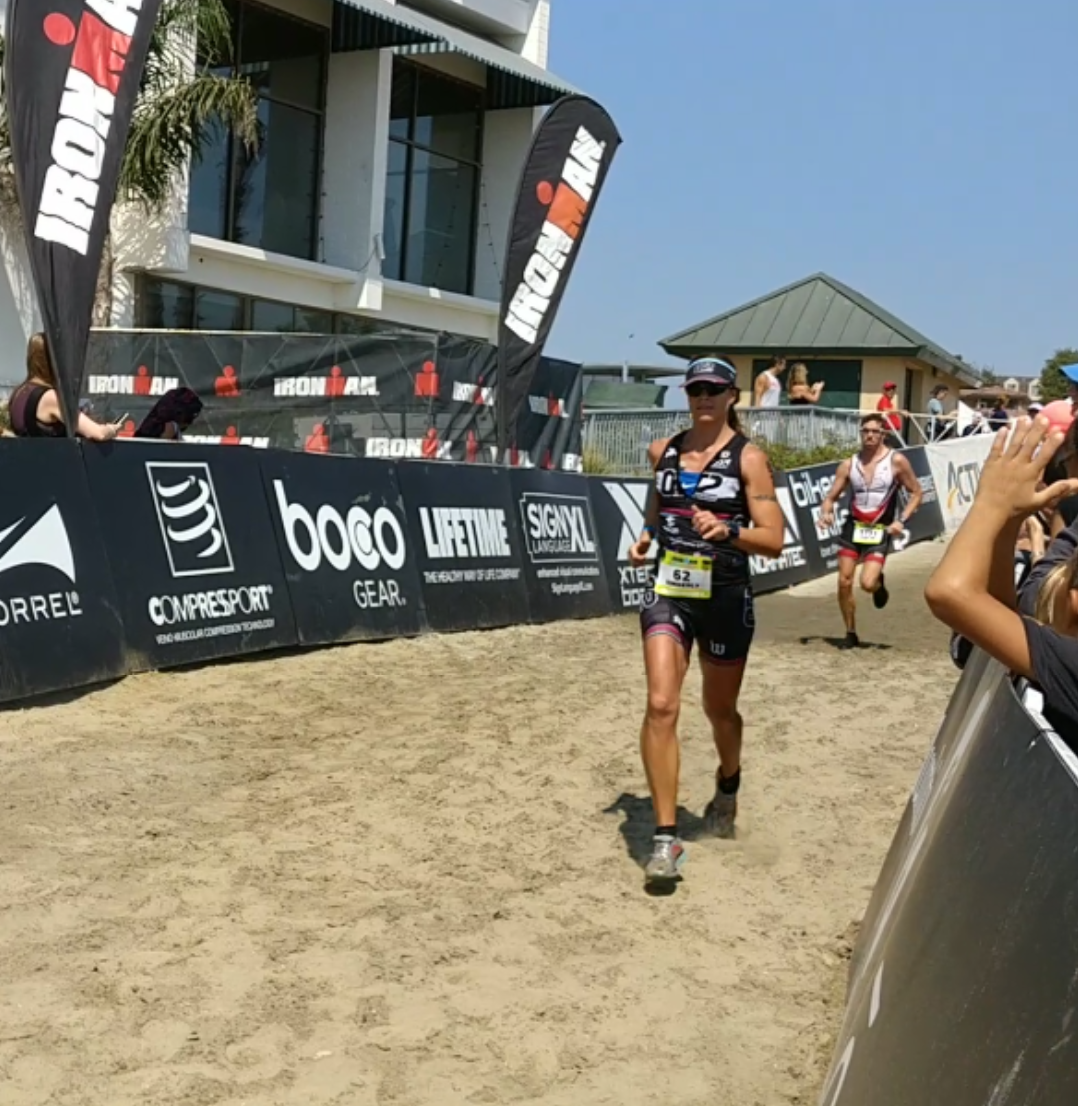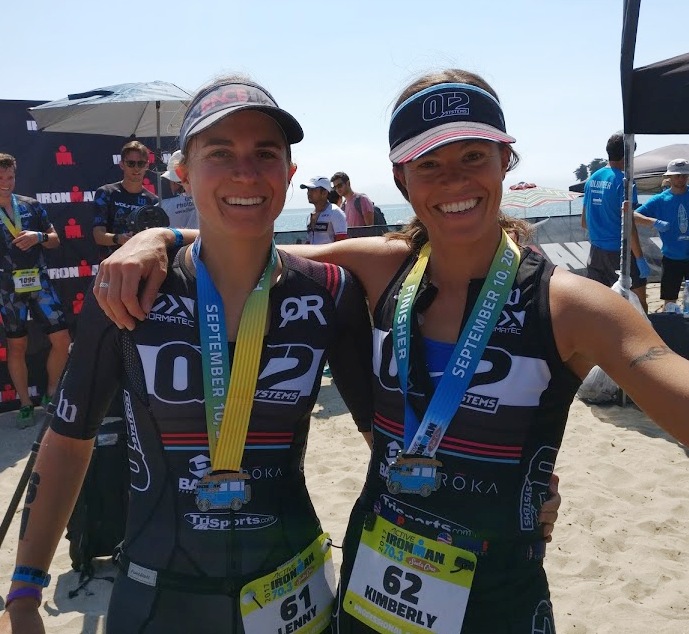My DNF at Boulder Peak was followed by… Another DNF at IRONMAN Boulder 70.3 a month later. This time it was premeditated, a hard decision to come to terms with, but ultimately my choice came down to either Did Not Finish or Did Not Start. By the end of July it was clear that I was battling a hamstring issue, among other things. I had my first rendezvous with Dry Needling treatment, which feels like a pokey spike climbing into the achiest part of your muscle and burrowing around like a gopher making a little nest deep inside your leg. It’s delightful.
I asked myself the obvious question: Was my last minute decision to add an extra twenty one miles to my Ironman “training day” the reason for this late season injury? If so, I accept responsibility for the choice that did exactly what I feared it might (by denying me my next two races).
However, there is also the possibility that the Ironman was not the determining factor in whether I stumbled upon injury this year, and when I look at it that way, I am infinitely more grateful that I seized the opportunity when I did. It is still a shining, thrilling milestone in my race career, and one that even with the benefit of hindsight, I would again sacrifice the rest of the season for.
But it’s hard to pinpoint the cause of vague overuse irritations. I felt fine (relatively speaking) during and after the Ironman. I recovered in the following weeks as well as one could hope. But three weeks later I apparently pushed myself over the edge running a 5k. Was it really just the 5k? I ran a 5k two weeks before the Ironman with no ill after-effects. (To be fair, I did run the second one faster, with every intention of running absolutely as hard as I could.) But my personal experiments as well as observations of other people’s ill-advised endurance over-reaches have given me familiarity with the pattern of delayed onset consequences. So the 5k could have just topped off the trouble that was already brewing.
Overuse injury comes from a perfect storm of conditions – physical structure, technique, level of repetition, degree of intensity, as well as external stress and/or benefits. It’s impossible to isolate just one of these. It’s the combination of those elements (and more) that determine why some people can run back-to-back marathons with no fallout, while others struggle to complete just ten miles without breaking themselves. Overuse injury does frequently pop up out “out of nowhere,” but in reality it is the million tiny repetitions of a slightly inefficient movement that lead up to the final seemingly insignificant event that gets blamed for the problem.
I had a rough few weeks accepting the setback. This exposes the obvious vulnerability in the life of the full-time athlete, or really anyone who places a high priority on their athletic pursuits – an injury, however slight or temporary, threatens your very sense of identity and purpose. The pain of compromised physical capability is felt most acutely by those who put a disproportionate amount of value in the ability to complete the day’s workouts successfully, and to achieve competitive goals exactly according to plan.
I was trying to keep things in perspective. I clearly have plenty to be grateful for if my biggest complaint is “my run sucked today.” But even though the hamstring was the primary concern, there were a handful of other issues that cropped up around the same time, leading to pretty low morale overall in the weeks leading up to Boulder 70.3.
During the worst of it, on the hot, sunny day I was ambushed by a torrential downpour (wtf?), the following line from my training log is both pathetic and comical: “I got back from the failed long run feeling like I had just hit the lowest point in the week… or the month… or the whole season, actually. And then my wet foot slipped on the tile and I fell down the stairs.”
Luckily I emerged from that fall without (additional) physical injury, but the psychological injury of the universe relentlessly persecuting me with this string of bad luck was enough to realize Boulder 70.3 was over for me before it began.
Attitude alone cannot give you physical strength and skills that were not there before, but it can absolutely rob you of access to the capabilities that you do have. I didn’t have the right attitude to be successful with that race, regardless of my actual physical state.
Additionally, the specialists I had seen were all giving me the exact same doubtful frown. The expression that said, “I know you’re probably going to do it anyway, but you really shouldn’t run on this right now.” I was advised “for at least a week or two,” to take a break from running, although I sensed that that was their way of saying, “you probably need at least a month.”
I could’ve completed the race. I mean, I could still run – just not as fast, and it hurt a lot.
But then I would potentially have to tolerate all the “I told you so” eyebrows when I ended my season prematurely by pushing an irritation into a full blown injury.

A few items conspicuously missing from my transition spot.
Since my swim and bike were unaffected by the hamstring trouble, I had the option to race part of Boulder, as long as I absolutely under no circumstances tried to run. I only brought two pairs of shoes to the race that morning: cycling shoes and flip flops. I didn’t want to take any chances.

Shifting my goals proved beneficial, as I re-focused all of my energy on completing a PR-worthy bike split. “I didn’t wake up at 4am for nothing” I told myself as I embraced the discomfort of clawing my way right into 7th place, by far the closest I’ve ever been to the top (even if just for a moment) at a race with over 20 competitors in the pro field.
I shattered my previously held limitations on power output and heart rate levels, and completed the 54 miles (the course was short) at a faster average pace than ever before – at any distance – including 12 mile sprints!
…and then I dropped out of the race, first in line for the free post race massage.
After another week or so of trying not to mope about the absence of running, I cautiously worked runs back into the training schedule. There were signs of improvement, but I still felt like I was hanging on by a thread.
My ultimate goal was to make it to IRONMAN 70.3 Santa Cruz in September. Essentially what I wanted to do was table the injury just for one more month, close the season out with a great race in Santa Cruz, and then I could go back to being all injured and whatever in the off-season, no prob.
It was a great plan…although a complete fantasy.
Not only was I less than completely recovered by September, but I also didn’t have the run training I needed going in to this race, so I was hoping I could just get by on happy thoughts and pixie dust…
I traveled out to Santa Cruz with fellow QT2 teammate Lenny Ramsey, who had been through a similar ordeal, but had triumphed over the injury and was picking up momentum with her run speed restored. Positive vibes!
Race morning delivered us a thick blanket of fog along the coast, and since the sighting buoys had disappeared into the mist, the race start had to be delayed. And then delayed again.

See the bouys right behind us? No? That’s OK, neither could we. They gave the women these great camouflage swim caps too, so we could vanish into the fog.
I could see strained expressions on a few of the women’s faces as the pros huddled around to hear the new plan; 1.2 miles shortened down to just 750 yards. I guess some people don’t like last minute changes. Or perhaps the stronger swimmers were already calculating what this was going to mean for fighting off the competition. For some reason, I felt a little giddy, like a 4th grader when the power suddenly goes out during a math test. I do love the swim, but I didn’t mind hearing that there was going to be less of it.

Photo Credit Isa Hashim
I actually really enjoyed our 750 yard sprint. The ocean temperature wasn’t its usual face-freezing cold, and all the delays had given me ample time to warm up my arms. The distance didn’t allow much time for us to spread apart, so I stayed right with a big pack of girls, one of whom took to clobbering me at every opportunity.
I was with this same pack heading out to the bike course, which was just as foggy as the swim. My sunglasses spent the whole ride shoved down the front of my shirt, and condensation dripped off the front of my helmet. Visibility was limited to about twelve meters ahead, or as they say in Ironman-speak, “six bike lengths.” The rule is that you must keep six bike lengths behind the rider in front of you, or you are required to pass them – in twenty five seconds or less. That sounds like a lot of time to get around someone, but when you’re moving at 23 mph and the person in front of you is moving at 22.9 mph, just closing that twelve meter gap takes up most of that time, and then you still have to complete the pass. It’s always a little anxiety-inducing, since not only does it make the legs burn something fierce, but failure to complete a pass properly is a Blue Card (a time penalty). I’m lucky in that the front of the race is so sparse that I don’t have to deal with passing (or with the threat of Drafting penalties) that often.
Somewhere around mile 40, I had the peculiar experience of hearing a voice – no voices, plural! – right behind me. And yet no one passed me. Twelve meters back is too far to be able to hear another rider talking, and a third rider would need to be another twelve meters back from them. There are no conversations on the bike course. The wind was whipping in my face, maybe it was just my imagination? No, I couldn’t make out the words, but I could definitely distinguish multiple voices. This was so illegal! Where were the race officials?! People were catching a free ride off my back wheel! And furthermore, if you can have a casual conversation at the front end of the race, you clearly aren’t working hard enough. I tried to shut it out and stay focused on my own effort, fighting a headwind, and a slight uphill grind. When I finally got to the well-earned downhill, I tucked in tight, prepared to rocket down the hill at 40 mph, when suddenly, the yahoos who I had been pulling for some ten or fifteen minutes swarmed around me on the left and right, and then decided to coast right in front of me. I sat up, slammed on my brakes, and observed that these three weren’t even part of the race. I was still technically in illegal territory, unable to go slow enough to create the necessary twelve meter gap behind this obnoxious group of recreational riders.
I had to push a little harder than I wanted to, but I managed to get back in front of the interlopers and then drop them, refraining from delivering the barrage of expletives they deserved (that would take too much energy).
After that I hit the perfect blend of strong-with-ease on the bike, and was feeling pretty good about how things were going…
Until that 13.1 mile run.
There were some desperate happy thoughts, but there was no pixie dust.
I was clinging to an optimistic attitude, assuring myself that I would hit my stride soon, that maybe I just needed another gel to give me an extra kick… but there was no denying that my pace was significantly slower than usual, and no amount of mental fortitude was going to revive those wet noodles that used to be my legs. Typically, the run is the best part of the race for me. It’s where I go deep into the pain cave and watch with wonder as I slowly but surely reel in the competition (and age group guys) ahead of me. It’s the hardest and the most rewarding. But on this day, it was just hard. Mile after mile, I could constantly hear footsteps behind me as dozens of men passed. I felt like I was moving in slow motion, the distance impossibly far. I reminded myself that this was my finale, and I would surely miss running during my sabbatical, which was now less than one hour away! I reminded myself how much I love this course, with its scenic, curving route along Cliff Drive, and the middle miles of trail run through Wilder Ranch State Park, overlooking the ocean. I prompted myself to “savor” this run, in all its magnificence and misery.
At mile 7 Lenny blazed past me, smooth and strong, disappearing in a cloud of dust. Soon the rest of the women behind began catching me, and I was helpless to respond. In the final mile I spotted a competitor, and dug deep to squeeze out every last bit of effort I had left in order to catch her. When I looked down at my watch, I was running… exactly the same pace as before.
I did succeed in completing the pass, and mercifully the race no longer features that half mile slog through sand, and ends on a downhill, letting gravity deliver you right into the finish line.
It was not the glorious season end that I had hoped for, but I was admittedly really happy to reach the finish line again, something I don’t take for granted anymore.


